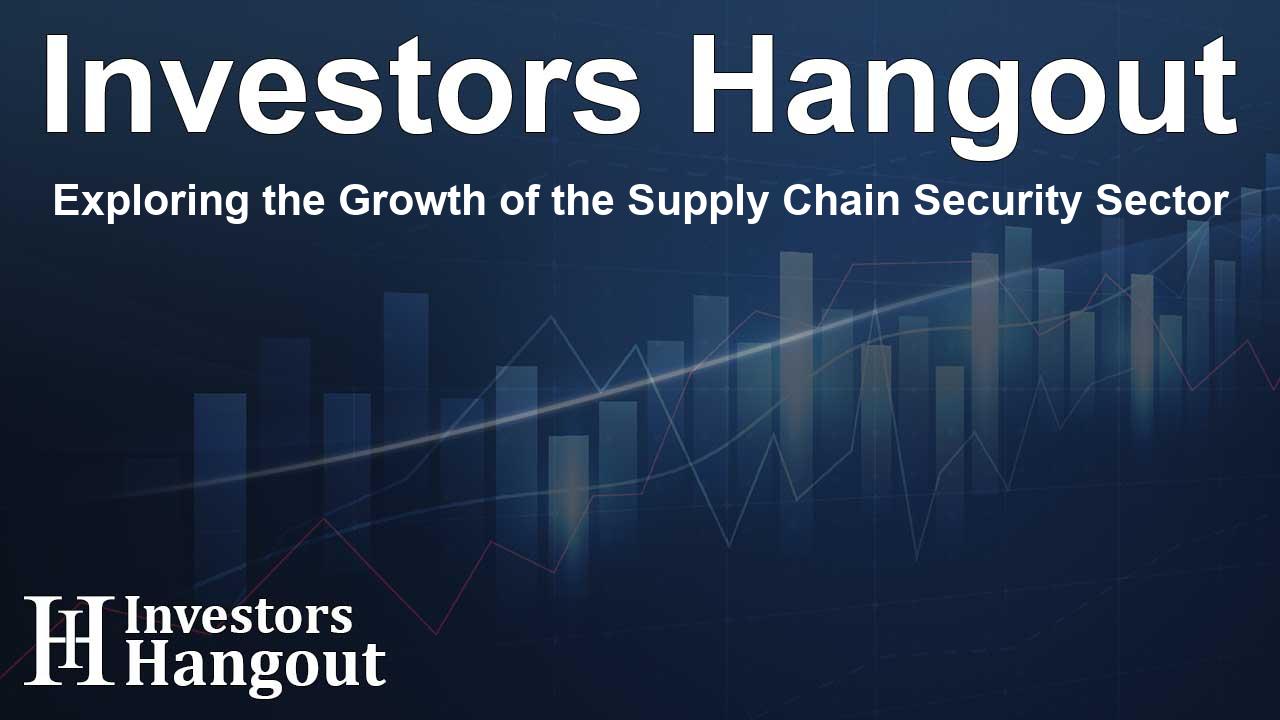Exploring the Growth of the Supply Chain Security Sector

Supply Chain Security Market Overview
Recent studies indicate a significant expansion in the supply chain security market, expected to reach approximately $5.14 billion by 2030. This growth represents a remarkable compound annual growth rate (CAGR) of 12.6% from a valuation of $2.52 billion in earlier forecasts. This upward trend highlights the increasing awareness and proactive measures being taken by businesses to fortify their operations against emerging security threats.
Drivers of Market Growth
Rising Cybersecurity Threats
One of the principal factors propelling the growth of the supply chain security market is the alarming rise in cyberattacks targeting supply chain networks. As businesses become more interconnected, the avenues for potential breaches expand, thereby escalating the need for robust security measures.
Need for Transparency
Alongside this, the demand for transparency within supply chains is growing, driven by regulatory pressures and customer expectations for accountability. Organizations are now looking to technologies that not only ensure product safety but also improve traceability across the supply chain.
Challenges and Opportunities
Budget and Skills Constraints
While the growth trajectory seems promising, several challenges persist. Many small businesses face budgetary constraints that limit their ability to implement comprehensive security solutions. Furthermore, the ongoing shortage of skilled professionals in the cybersecurity domain stands as a significant barrier to achieving optimal security across supply chains.
Emerging Opportunities
The dynamic landscape of eCommerce presents a unique opportunity for growth. As more consumers turn to online shopping, businesses are compelled to adopt innovative security technologies that can safeguard their transactions and protect sensitive data. Furthermore, advancements in risk prediction and management will continue to shape the strategies employed in supply chain security.
Key Players in the Market
A diverse array of companies are leading the charge in the supply chain security market. Key players include:
- IBM (US)
- Emerson (US)
- Oracle (US)
- NXP Semiconductors (Netherlands)
- Testo (Germany)
- Orbcomm (US)
- Sensitech (US)
- Elpro (Switzerland)
- Rotronic (Switzerland)
- Berlinger & CO. (Switzerland)
These organizations are at the forefront of innovation, continually developing advanced technologies tailored to enhance supply chain security.
Transformations in Supply Chain Security
Technological Innovations
Transformations within the supply chain security landscape are primarily driven by technological innovations. Blockchain technology, for example, facilitates real-time, decentralized monitoring that enhances traceability and minimizes fraud, particularly in critical sectors such as pharmaceuticals and food supply chains.
AI and IoT Integration
In addition to blockchain, the integration of AI and IoT technologies is proving essential. These technologies enable organizations to predict vulnerabilities, detect anomalies, and optimize overall operations by leveraging real-time data analysis. This level of insight can significantly reduce response times during security breaches and improve overall supply chain resilience.
The Role of Healthcare & Pharmaceuticals
Particularly noteworthy is the projected growth of the healthcare and pharmaceuticals segment within the supply chain security market. This sector is poised for expansion due to mounting concerns over counterfeit drugs and the urgent need for compliance with stringent regulations. As regulations like the FDA and EU directives tighten, the demand for effective traceability solutions rises accordingly.
Future Directions
As we look to the future, investment in supply chain security technologies will only intensify, especially in light of recent global health events that have underscored the necessity for enhanced digital supply chain solutions. Companies are now prioritizing visibility and security more than ever, ensuring that their operations remain resilient amidst ongoing challenges.
Frequently Asked Questions
What is the expected growth of the supply chain security market?
The supply chain security market is projected to grow to $5.14 billion by 2030, reflecting a CAGR of 12.6%.
What are the driving factors behind this growth?
Rising incidents of cyberattacks and the increasing need for transparency in operations are key drivers of market growth.
Which sectors are leading the supply chain security initiatives?
The healthcare and pharmaceuticals sector is expected to lead due to stringent regulatory requirements and safety concerns.
What role do technologies like blockchain play in supply chain security?
Blockchain technology enhances traceability and prevents fraud by allowing real-time, decentralized tracking of products.
How are AI and IoT influencing supply chain security?
AI and IoT provide critical insights into potential vulnerabilities, enabling organizations to optimize security and operational efficiency.
About The Author
Contact Thomas Cooper privately here. Or send an email with ATTN: Thomas Cooper as the subject to contact@investorshangout.com.
About Investors Hangout
Investors Hangout is a leading online stock forum for financial discussion and learning, offering a wide range of free tools and resources. It draws in traders of all levels, who exchange market knowledge, investigate trading tactics, and keep an eye on industry developments in real time. Featuring financial articles, stock message boards, quotes, charts, company profiles, and live news updates. Through cooperative learning and a wealth of informational resources, it helps users from novices creating their first portfolios to experts honing their techniques. Join Investors Hangout today: https://investorshangout.com/
The content of this article is based on factual, publicly available information and does not represent legal, financial, or investment advice. Investors Hangout does not offer financial advice, and the author is not a licensed financial advisor. Consult a qualified advisor before making any financial or investment decisions based on this article. This article should not be considered advice to purchase, sell, or hold any securities or other investments. If any of the material provided here is inaccurate, please contact us for corrections.
